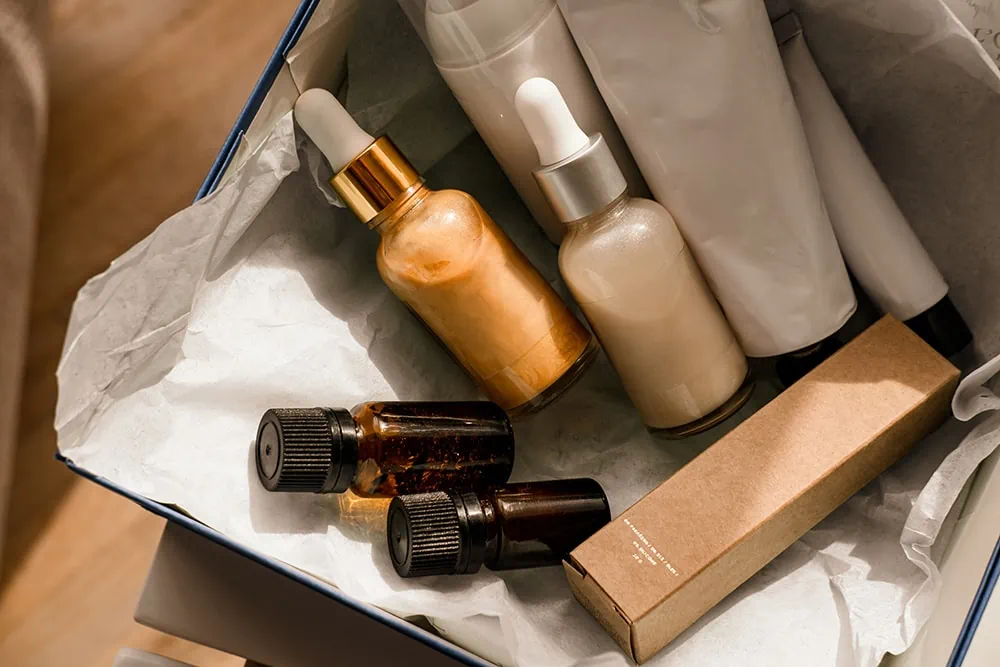
In a market that regularly sees new brands and products launching to an enthusiastic audience with an eagerness for ‘the latest thing’, brand loyalty in the beauty industry is an elusive prize.
According to the US e-commerce platform Metrilo, the average customer retention rate in beauty is 23% – or, put another way, brands can expect just 1.6 orders from each customer.
That means brands are constantly having to work to win new customers, which is expensive and unpredictable. Imagine if you could build a loyal following who kept coming back for more, month after month. One tactic that appears to be succeeding in the quest for this holy grail is the subscription model. In this blog we look at the growth of beauty box subscriptions and how beauty brands can make the model work for them.
Rise of the beauty box
Subscription box services of all kinds have enjoyed steady growth over the last 15 years, aided by the internet and a growing appetite for the value afforded by direct-to-consumer (DTC) sales. A 2019 report by Royal Mail showed that 27% of consumers in the UK are signed up to a subscription box service. When broken down into age groups, the same research found that over half of 25-34-year-olds are signed up to one or more.
Beauty and wellbeing boxes are among the most popular subscription box categories with 11% of UK shoppers signed up and a forecast market value of £92million by 2025. As a business concept alone, the subscription box looks like a sound investment, but it offers a whole lot more in terms of managing the customer relationship.
First to launch in 2010 was Birchbox, offering monthly packages of selected beauty products from a range of brands. Beauty subscription model advantages included price reductions, the convenience of having your beauty products delivered to your door and the promise of new discoveries, curated by Birchbox’s beauty experts.
Development and variations
Birchbox spawned the start-up of numerous other beauty subscription services and the concept evolved, while retaining the original value proposition. A 12-month subscription with Glossybox costs £11.50 a month, for which you get a box of five selected beauty products from “the best beauty brands”, each one worth at least £50. Sephora Beauty Box also sends out five products a month “from cult brands to big hitters” for the similar price of £11.95 a month for 12 months but gives subscribers the choice of products in their box.
For specialist beauty products like Opte, a skincare device for hyperpigmentation that uses replaceable cartridges, the subscription model famously pioneered by Dollar Shave Club for razor blades offers an ideal solution. Pay a regular monthly fee and receive your cartridges through your door exactly when you need them, at a discounted price. The mushrooming market for beauty refillables, which grew by 364% in 2022, is a golden opportunity for this subscription model.
In 2021, Liberty launched The Beauty Drop subscription service, marking the entry of a single big-name brand into the subscription box market. For £20 a month, subscribers receive four boxes a year containing Liberty beauty products worth over £300. At the same time, Marcia Kilgore’s Beauty Pie was booming with its more flexible membership model. Also selling own-branded best-in-class beauty products, Beauty Pie lets members buy whatever Beauty Pie products they want, whenever they want, without the luxury price tag.
How to retain customers with beauty box subscriptions
So, what are the key ingredients of existing beauty subscription and membership models that brands can draw on to build and retain their own loyal fan base?
1. The beauty box should be high quality and appealing
Quality is paramount. If customers don’t rate the products being offered, they won’t subscribe, regardless of how much money the service promises to save. So it’s important to get your products and your brand story spot on, tapping into ethical causes like animal rights and sustainability, or, as in the case of Beauty Pie, democratising access to luxury products.
2. Clear value for money
Subscriptions give brands the opportunity to manage their stock more efficiently, order and sell in bulk, reduce marketing activity, packaging and delivery costs and enjoy a more predictable cashflow, all of which yield cost savings that can be passed on to the customer. For customers, this is a key selling point. It has to make sound economic sense.
3. Convenient for the customer
It’s no coincidence that beauty subscription services boomed in 2020-21, when the pandemic was changing consumer behaviour and driving sales online. The ability to buy products you can trust and have them delivered to your door (without you having to think about it, if that’s the model you prefer) is a big attraction.
4. Subscription box fulfilment should be on point
The ability to deliver on your promises to a community of engaged customers is crucial in keeping that community onside. Products must arrive on time and in perfect condition, every time, which means partnering with a fulfilment company that has the skills and capacity to grow as your membership grows, and never miss a beat.

The magic ingredients
While value and convenience remain the obvious benefits of subscription services, it is the extras that they offer that really drive brand loyalty. Having your customers tied in to an annual subscription presents a priceless opportunity to engage with them in a truly meaningful way.
Supporting the basic beauty subscription offer is a whole infrastructure of added benefits. The Beauty Drop, for example, includes free delivery, members-only offers, rewards, events and exclusive beauty advice.
Subscribers become ‘members’ of a community, nurtured by the brand and fed with expert advice and information, across multimedia platforms. Articles, videos, forums and surveys keep customers actively engaged, with a friendly tone of voice that engenders a powerful sense of belonging. Subscriber-only offers, previews and even selected product lines can be used to stoke that feeling of discovery and exclusivity that beauty shoppers love. “Want to be the first to try our new lash serum? Sign up.”
Each subscription community feeds its owner in return, with a flow of user-generated content that can be repurposed across multiple platforms, a constant buzz around the brand and vast amounts of customer data, revealing purchasing patterns and behaviours and enabling laser-focused targeting with future products and offers.
With your ‘members club’ fully engaged, you can add new lines and expand your offer. Glossier, for example, has launched its own range of branded merchandise, which feeds subscribers’ sense of belonging and exclusivity, as well as bringing in extra revenue.
Beauty box subscriptions help create brand loyalty
While the idea of creating a loyal following is nothing new to beauty brands, achieving that is easier said than done.What beauty subscription services have shown over the last few years is that the value and convenience they offer is just the bait; the real hook is the relationship they are able to build with customers because they have committed to repeat payments and orders over a period of time.
The subscription model offers an exciting solution for beauty brands wanting to keep their customers in an increasingly competitive market. Just don’t lose sight of why they buy from you in the first place. As Beauty Pie COO Panni Morshedi puts it, “It only works if people come back because they love the products, not because they’re stuck in a membership.”
Find out more about beauty subscription fulfilment services or get in touch with us today to see how ILG can help your brand grow.
ILG is proud to be CEW’s preferred logistics provider.

Contact Us
More insights >
How to Manage Your Stock with SKU Numbers: Best Practice Guide
If you’re an e-commerce business, efficient inventory management is essential – and one important part of this is understanding SKU numbers.
ILG is a Finalist for Best Logistics Solution at the BeautyMatter 2025 Awards!
We’re thrilled to announce that for the third year in a row, ILG is a finalist for ‘Best Logistics Solution’ at the BeautyMatter 2025 Awards!

